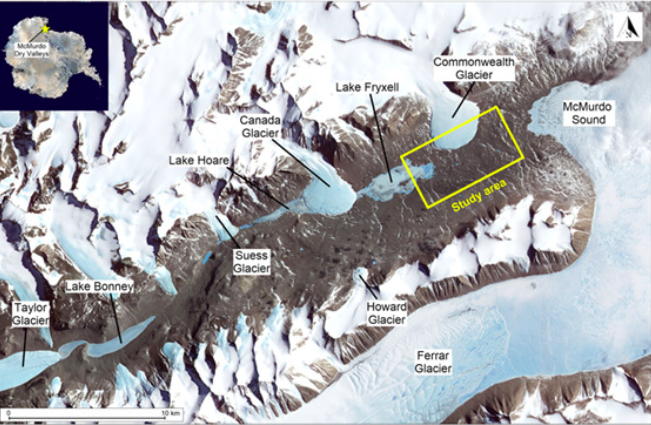
In the dry valleys of the Antarctic continent, global warming is degrading permafrost, the perennially frozen ground under the Earth’s surface: a phenomenon that leads to the release of significant amounts of greenhouse gases.
These are the findings of research conducted as part of the Source and impact of greenhouse gasses in Antarctica (SENECA) project funded under the National Antarctic Research Programme (PNRA) by the Ministry of University and Research (MUR). The study involved Italian scientists from the Sapienza University of Rome, the University of Padua and the National Research Council (CNR), coordinated by the National Institute of Geophysics and Volcanology (INGV).
The detrimental effects of climate change in polar areas are nothing new. It was already known, in particular, how permafrost stability – now threatened by rapidly rising temperatures – plays a key role in ecosystems as it stores large amounts of greenhouse gases. However, the correlation between the warming of subsurface brine and degassing, widely observed in the Arctic, has not, to date, been investigated in the Antarctic region.
The SENECA researchers focused on the peri-coastal areas of Antarctica, the McMurdo Dry Valleys, the largest ice-free region on the white continent and one of the most extreme environments on Earth.
“During the Antarctic summer 2019-2020, the first extensive geochemical campaign was conducted over an area of approximately 22 km² in the Taylor Valley. The team measured the concentrations of a wide range of gases in the soil, including carbon dioxide, methane and hydrogen, and the flux of CO2 in order to identify the preferential routes of ascent for deep fluids and evaluate the mechanisms of migration,” explained Livio Ruggiero, INGV researcher and principal investigator of the SENECA project, who added: “Comparing these data with the few previous data available, we observed increased CO2 flux rates, estimated at about 15 tons per day over an area of 21.6 km². In fact, the CO2 emission calculated during the summer period is about 448.5 tons per month for the entire area”.
The study suggests that gas release from permafrost may not be limited to the Taylor Valley but may also extend along the over 24,000 km of coastline of the Antarctic continent. However, further investigations will be necessary to gain a clearer picture of the situation.

